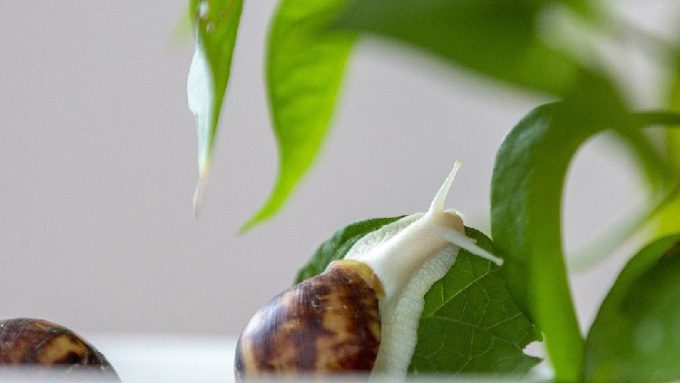Chinese Scientists Develop Bioglue from Snail Mucus for Treating Open Wounds and Chronic Ulcers
Every year, hundreds of millions of people suffer injuries from accidents, chronic ulcers, and other skin tissue wounds, with severe cases posing life-threatening risks. The invention of tissue adhesives has brought remarkable technological advances to surgical practices.
Currently, two main tissue adhesives used in clinical practice are cyanoacrylate and fibrin (chemically synthesized). While cyanoacrylate has strong adhesive properties, its drawbacks include slow degradation and potential toxic side effects. Fibrin adhesives have good biocompatibility; however, due to their weak adhesion, they are only applicable in areas with limited local stress, resulting in a restricted range of use. Consequently, there is an urgent clinical need for tissue adhesives that offer good biocompatibility, high adhesion, and low potential risks.

White jade snails at a breeding facility in Jiangsu Province, eastern China. (Photo: CFP)
Recently, researchers at the Kunming Institute of Botany, Chinese Academy of Sciences, discovered a polysaccharide-based adhesive (d-SMG) found naturally in the mucus of white jade snails, which exhibits strong adhesion to moist tissues, outperforming clinical fibrin glue, as reported in the journal Nature Communications last month.
Experiments on both healthy and diabetic mice showed that this natural adhesive d-SMG adheres firmly to external skin wounds and promotes healing without causing secondary damage or scarring.
Moreover, it can reduce inflammation in chronic wounds and significantly improve the healing process. In-depth analysis of the mechanisms revealed that the natural hydrogel significantly accelerated the regeneration process of granulation tissue, angiogenesis, and collagen deposition in chronic wounds, while also exerting anti-inflammatory effects by increasing the phosphorylation levels of signaling pathways.
The research results provide enlightening insights for the development of a new generation of biomedical adhesives, while also offering new ideas for treating common skin wounds, such as hard-to-heal foot ulcers in diabetic patients and other skin diseases.


















































